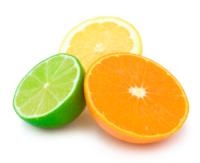Here is a short article we published a few years ago from Four Winds Growers that may be of interest to many of us. Cold weather protection for our citrus trees is important so the fruit stays in good edible condition. Even though we're into January now, there's still plenty of time for cold temperatures to damage our citrus trees!
While mandarins, kumquats, poncirus, and the famous yuzu are somewhat cold hardy, lemons, limes and grapefruit are relatively frost sensitive. Oranges fall somewhere in the middle tolerance range. The Four Winds Growers' Citrus Variety Info Chart is a great place to compare these and other factors.
Take Action in Low Temperatures
Make sure the roots are moist and move them to a protected location where they will not freeze, such as a porch, shed, or garage. If bringing completely indoors to a mild dry climate, they will make the transition to houseplants best if roots are first allowed to get about 50% dry BEFORE the move. Once situated in the sunny window or solarium, water immediately, providing humidification by elevating the pot a few inches above a large drainage saucer, assuring the bottom of the pot never sits in the drainage water.
- Always assure that the trees are watered well. When soil freezes, it pulls moisture from the roots, damaging them. A combination of two or more the three ideas below will give you more protection than just one option.
- Provide a few inches of mulch around the tree to cover the soil and help reduce moisture loss, being careful to keep mulch pushed out a few inches away from the base of the tree trunk.
- Anti-transparent sprays reduce loss of moisture from the leaves and can give 4-6 degrees protection for up to a month. Timing, preparation and proper use are critical and types vary.
- Frost covers come either as bonnets or sheets. Other fabrics and/or plastic can suffice but will have to be removed in the day time. Frost covers breathe and can stay on the trees for days without damage. Make sure the material is well secured to the ground to assure efficacy.
- Old fashioned heat-producing Christmas lights placed in the branches of the trees can provide heat to offset the cold air. Combine with frost covers on the coldest nights, if needed. Use a timer to reduce operator error issues.
(Orchardists sometimes put their sprinklers on, but this only works while the sprinklers run. If they freeze up, you have ice entombed trees that may survive but may also have a lot of broken branches. This is not our preferred alternative.)
More information on growing citrus can be found here, here and here (although the third link is a guide to growing citrus in Southern California, there's a lot of good information that applies to us in Central California as well). If, like me, you are currently in possession of more Meyer lemons and Bearss limes than you know what to do with, how about giving candied citrus peel a try?
Don't forget to subscribe to our blog so that you receive an email notification when a new post goes up. If you have questions, contact us online, by phone or in person to get answers to your gardening quandaries.


